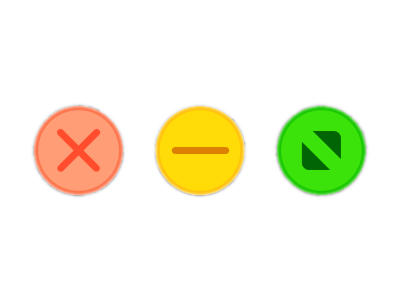Designers often feel pressure to come up with something new and revolutionary. They want to make their mark on the design world by revolutionizing some new concept or idea. Certainly this form of thinking is a good thing; it fuels innovation and leads to exciting new possibilities that others wouldn't have ever contrived. However, humans build habits, and if we're designing for humans we simply must take this into account.
Habits.
Have you ever switched operating systems and found yourself trying to close a window but the 'X' is on the wrong side? Have you ever driven a friend's car and suddenly jerked forward because their gas pedal was more sensitive than you were used to? Humans are habit forming creatures, we build muscle memory and our brains will begin to automate tasks that we perform often enough. This is a great thing! Can you imagine the effort that typing would require if you had to consciously remember where each key was and deliberately press them in sequence?
Whether we like it or not, our design 'ancestors' have pioneered the field and have developed many habits in users. Some good, some great, some absolutely terrible. This means that whenever you make a design decision we must all be conscious of how the user expects it to work from past experience, and then only change it if we're certain that the improvement strongly outweighs the discomfort the user will endure learning the new system.
You must ask yourself, will the user do this enough to develop a new habit? If you're designing a simple company website, or a simple utility program the answer is no. It is better to follow convention and lay out the site as people would expect, even if your design and layout is 'improved' in some way.
Innovation.
How then can we innovate? There's a few options here. Unfortunately in most cases, as a single designer it is simply impossible to have a large enough effect to change the design landscape. Existing habits are strongly formed by years of legacy and shift only slightly over many many years.
One way the design landscape changes is through the introduction of new mediums. Mobile devices and tablets, though they are computers, are different enough from laptops and desktops so as to require a fundamental shift in design paradigms. It is in these moments that designers thrive. When technology is new, habits have yet to form and designers can form the landscape as they see fit. These are times when designers must be conscious of every little decision they make, for it again sets precedent for all future designers in the medium.
Good luck!
Hopefully you learned something 🤞! If you did, please consider joining my Patreon to keep up with my projects, or check out my book: It teaches the principles of using optics in Haskell and other functional programming languages and takes you all the way from an beginner to wizard in all types of optics! You can get it here. Every sale helps me justify more time writing blog posts like this one and helps me to continue writing educational functional programming content. Cheers!



